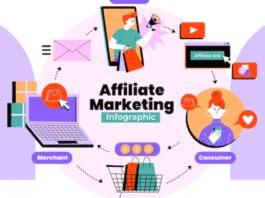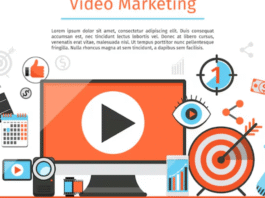Pay Per Click Advertising: A Comprehensive Guide
Introduction
Pay-per-click (PPC) advertising strategy is a common form of paid search advertising. Businesses pay only when a user clicks on their ad. These ads typically on search engine results pages (SERPs). It is a highly effective way to drive targeted traffic to a website. This ensures that businesses reach potential customers at the right time.
What is PPC?
PPC, or pay-per-click, is a digital advertising model. Advertisers pay a fee each time a user clicks on their online ad. This model enables advertisers to bid for ad placement in a search engine’s sponsored links. This occurs when someone conducts a search using a keyword linked to their business offering.
How It Relates to Search
Paid search ads constitute a significant part of PPC advertising. These ads on search engine results pages (SERPs) like Google and Bing. Businesses bid on relevant keywords or phrases, and their ads will show when users search for those terms.
How It Works
- Businesses bid on relevant keywords.
- Ads will when users search for those keywords.
- Advertisers pay only when users click on their ads.
Example: If someone searches for “best local pizza,” a PPC ad for a pizza restaurant is at the top. This occurs in the search results. This happens if they have successfully bid on relevant keywords.
Other Forms of PPC
While search ads are common, PPC also includes other forms like:
- Show Ads (banner ads on websites)
- Social Media Ads (Facebook, Instagram, LinkedIn)
- Shopping Ads (Google Shopping)
- Video Ads (YouTube pre-roll ads)
Understanding PPC Metrics
PPC vs. CPC
PPC (Pay-Per-Click) is the advertising model. You pay only when someone clicks on your ad. CPC (Cost-Per-Click) is the metric that measures the cost of each click within that PPC model.
- PPC: The advertising model used in platforms like Google Ads and Facebook Ads.
- CPC: The actual price paid for each click within a PPC campaign.
In simpler terms:
- PPC is the strategy; CPC is the cost metric within that strategy.
Key PPC Metrics
- Impressions: How often your ad is seen.
- Click-Through Rate (CTR): The percentage of users clicking on your ad.
- Quality Score: Google’s rating of ad relevance.
- Conversion Rate: The percentage of users completing desired actions.
Setting Up a Successful PPC Campaign
Defining Campaign Goals
Every PPC campaign should have a clear goal, for example:
- Increasing brand awareness
- Driving website traffic
- Generating leads
- Boosting sales
Choosing the Right Platform
Different platforms cater to different audiences:
- Google Ads: Best for search intent-driven traffic.
- Facebook & Instagram Ads: Ideal for social engagement and remarketing.
- LinkedIn Ads: Effective for B2B lead generation.
- Bing Ads: A less competitive choice to Google Ads.
Keyword Research and Choice
Keywords are the foundation of PPC campaigns. Use tools like Google Keyword Planner, Ahrefs, or SEMrush to:
- Find high-intent keywords.
- Analyze competition and CPC.
- Discover negative keywords to filter irrelevant traffic.
Optimizing PPC Performance
Writing Effective Ad Copy
Great ad copy should be:
- Concise and clear: Tackle the user’s needs.
- Actionable: Use strong call-to-action (CTA) phrases like “Get Started Today.”
- Keyword-rich: Include relevant keywords for better ad relevancy.
Landing Page Improvement
A well-optimized landing page improves conversions. Key elements include:
- Compelling headlines
- Clear and concise copy
- Strong CTA buttons
- Mobile-friendly design
- Fast loading speed
Budgeting and Bidding Strategies
Some common strategies include:
- Manual Bidding: Set CPC manually based on performance data.
- Automated Bidding: Google’s AI adjusts bids for optimal results.
- Target ROAS: Set a return on ad spend goal to maximize efficiency.
Tracking and Analytics
Measuring performance is essential. Use tools like:
- Google Analytics for tracking conversions.
- Google Tag Manager for event tracking.
- UTM details for monitoring specific campaigns.
A/B Testing for Continuous Improvement
To improve PPC performance:
- Test different ad creatives.
- Experiment with various bidding strategies.
- Compare different landing pages.
- Adjust targeting criteria.
Avoiding Common PPC Mistakes
Overlooking Negative Keywords
Failing to add negative keywords can lead to wasted ad spend. Regularly update your negative keyword list to exclude irrelevant searches.
Ignoring Ad Extensions
Ad extensions enhance visibility and engagement. Use:
- Sitelink Extensions: Direct users to specific pages.
- Callout Extensions: Highlight unique selling points.
- Structured Snippets: Show service categories.
- Call Extensions: Allow direct calling from ads.
Failing to Track Performance
Regular analysis helps find issues early. Check:
- Click-through rate (CTR)
- Conversion rate
- Cost per conversion
- Return on investment (ROI)
Advanced PPC Strategies
Remarketing Campaigns
Retargeting earlier visitors increases conversion rates. Strategies include:
- Dynamic retargeting for e-commerce.
- Custom audience segments for higher personalization.
AI-Powered PPC Improvement
AI tools can automate bid adjustments and ad placements. Platforms like Google Smart Bidding and Facebook’s AI-driven campaigns enhance performance with minimal manual intervention for ppc advertising.
Geo-Targeting and Local PPC
For local businesses, geo-targeting ensures ads are shown to relevant users. Improve by:
- Using location-specific keywords.
- Creating ad copy with local references.
- Running location-based promotions.
Measuring PPC Success
Tools for Performance Analysis
- Google Ads Dashboard
- Facebook Ads Manager
- Google Data Studio for customized reporting
Pay-per-click (PPC) advertising is a powerful digital marketing strategy that allows businesses to drive targeted traffic to their websites. You must understand the fundamentals of PPC to succeed. You are managing PPC advertising campaigns for clients. You are handling them for your business. Maybe you are working through an agency. This guide will cover everything from setting expectations to managing stakeholder requests and optimizing campaign performance.
Understanding PPC and Setting Expectations
What is Pay-Per-Click Advertising?
PPC advertising is a digital advertising model where advertisers pay a fee each time their ad is clicked. The goal is to attract qualified leads who are to convert into customers. Major platforms for PPC include Google Ads, Bing Ads, Facebook Ads, LinkedIn Ads, and more.
Importance of Setting Expectations
Before launching a PPC advertising campaign, it’s crucial to understand and set realistic expectations for stakeholders. This involves:
- Defining campaign objectives
- Determining the budget and cost per acquisition (CPA)
- Clarifying key performance indicators (KPIs)
- Outlining potential challenges and limitations
Managing Client and Stakeholder Requests
Common PPC Requests
Clients and stakeholders often make several requests, like:
- Launching a new campaign
- Adjusting budgets
- Optimizing ad copy and creatives
- Analyzing performance reports
How to Handle PPC Requests Effectively
1. Get Everything in Writing
Documenting all requests in emails or project management tools ensures clarity and accountability. It helps prevent misunderstandings and provides a record of discussions.
2. Arrange Requests Based on Goals
Align requests with overall business objectives. If a proposal does not align with campaign goals, offer data-driven reasoning to adjust or deny it.
3. Respond Promptly
Quick responses build trust and uphold transparency. If a query requires time for analysis, acknowledge receipt and give an estimated timeline for follow-up.
4. Expect Common Requests
Create templates and automation for commonly asked questions, like budget pacing, keyword performance, and campaign effectiveness for ppc advertising.
Setting Up a Successful PPC Campaign
Defining Campaign Goals
Each PPC advertising campaign should have a clear goal, like:
- Increasing brand awareness
- Driving website traffic
- Generating leads
- Boosting sales
Choosing the Right Platform
Different platforms cater to different audiences. Consider the next:
- Google Ads: Best for search intent-driven traffic
- Facebook & Instagram Ads: Ideal for social engagement and remarketing
- LinkedIn Ads: Effective for B2B lead generation
- Bing Ads: A less competitive choice to Google Ads
Targeting the Right Audience
Use audience segmentation techniques to improve targeting for ppc advertising:
- Demographic Targeting: Age, gender, location
- Interest-Based Targeting: User behavior and preferences
- Retargeting: Engaging users who have interacted with your website
- Lookalike Audiences: Expanding reach based on existing customer data
Keyword Research and Choice
Keywords are the foundation of PPC advertising campaigns. Use tools like Google Keyword Planner, Ahrefs, or SEMrush to:
- Find high-intent keywords
- Analyze competition and CPC
- Discover negative keywords to filter irrelevant traffic
Optimizing PPC Performance
Writing Effective Ad Copy
Great ad copy should be:
- Concise and clear: Directly meet the user’s needs
- Actionable: Use strong call-to-action (CTA) phrases like “Get Started Today”
- Keyword-rich: Include relevant keywords for better ad relevancy
Landing Page Improvement
A well-optimized landing page improves conversions. Key elements include:
- Compelling headlines
- Clear and concise copy
- Strong CTA buttons
- Mobile-friendly design
- Fast loading speed
Budgeting and Bidding Strategies
PPC advertising costs vary depending on industry, competition, and bidding strategy. Some common strategies include:
- Manual Bidding: Set CPC manually based on performance data
- Automated Bidding: Google’s AI adjusts bids for optimal results
- Target ROAS: Set a return on ad spend goal to maximize efficiency
Tracking and Analytics
Measuring performance is essential. Use tools like:
- Google Analytics for tracking conversions
- Google Tag Manager for event tracking
- UTM factors for monitoring specific campaigns
A/B Testing for Continuous Improvement
To improve PPC performance:
- Test different ad creatives
- Experiment with various bidding strategies
- Compare different landing pages
- Adjust targeting criteria
Avoiding Common PPC Mistakes
Overlooking Negative Keywords
Failing to add negative keywords can lead to wasted ad spend. Regularly update your negative keyword list to exclude irrelevant searches for ppc advertising.
Ignoring Ad Extensions
Ad extensions enhance visibility and engagement. Use:
- Sitelink Extensions: Direct users to specific pages
- Callout Extensions: Highlight unique selling points
- Structured Snippets: Show service categories
- Call Extensions: Allow direct calling from ads
Failing to Track Performance
Regular analysis helps find issues early. Check:
- Click-through rate (CTR)
- Conversion rate
- Cost per conversion
- Return on investment (ROI)
Advanced PPC Strategies
Remarketing Campaigns
Retargeting earlier visitors increases conversion rates. Strategies include:
- Dynamic retargeting for e-commerce
- Custom audience segments for higher personalization
AI-Powered PPC Improvement
AI tools can automate bid adjustments and ad placements. Platforms like Google Smart Bidding and Facebook’s AI-driven campaigns enhance performance with minimal manual intervention.
Geo-Targeting and Local PPC
For local businesses, geo-targeting ensures ads are shown to relevant users. Improve by:
- Using location-specific keywords
- Creating ad copy with local references
- Running location-based promotions
Measuring PPC Success

Key Metrics to Track
- Impressions: How often your ad is seen
- CTR: Percentage of users clicking on your ad
- Quality Score: Google’s rating of ad relevance
- Cost Per Click (CPC): The amount paid per click
- Conversion Rate: The percentage of users completing desired actions
Tools for Performance Analysis
- Google Ads Dashboard
- Facebook Ads Manager
- Google Data Studio for customized reporting
Conclusion
Effective PPC advertising management involves strategy, testing, and improvement. By setting clear goals, aligning requests with business objectives, and continuously refining campaigns, businesses can maximize PPC performance. Whether you’re managing PPC for clients or your business, you need to stay informed about industry trends. Leveraging advanced tools will help achieve better results for ppc advertising.
Discover more from currentnewschannel.com
Subscribe to get the latest posts sent to your email.













[…] this article, we’re going deep. We’re talking about real-world applications of AI in SEO. Carreras gave us some powerful insights. He explained how to weave artificial intelligence into […]